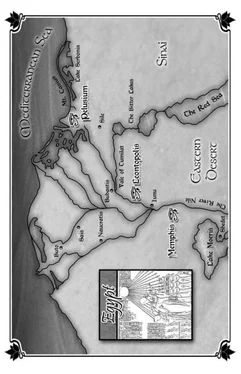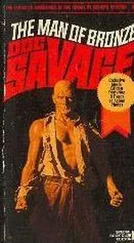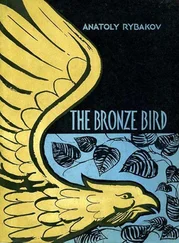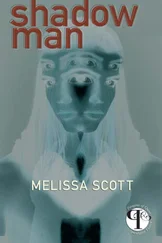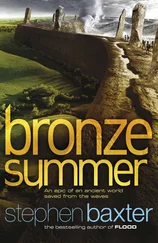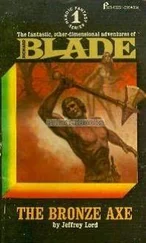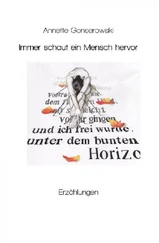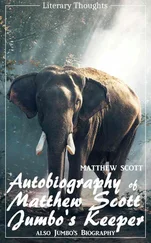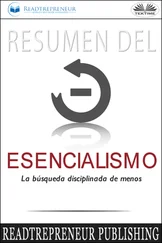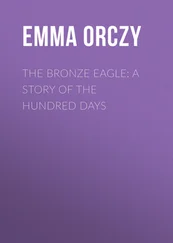Scott Oden - Men of Bronze
Здесь есть возможность читать онлайн «Scott Oden - Men of Bronze» весь текст электронной книги совершенно бесплатно (целиком полную версию без сокращений). В некоторых случаях можно слушать аудио, скачать через торрент в формате fb2 и присутствует краткое содержание. Жанр: Исторические приключения, на английском языке. Описание произведения, (предисловие) а так же отзывы посетителей доступны на портале библиотеки ЛибКат.
- Название:Men of Bronze
- Автор:
- Жанр:
- Год:неизвестен
- ISBN:нет данных
- Рейтинг книги:3 / 5. Голосов: 1
-
Избранное:Добавить в избранное
- Отзывы:
-
Ваша оценка:
- 60
- 1
- 2
- 3
- 4
- 5
Men of Bronze: краткое содержание, описание и аннотация
Предлагаем к чтению аннотацию, описание, краткое содержание или предисловие (зависит от того, что написал сам автор книги «Men of Bronze»). Если вы не нашли необходимую информацию о книге — напишите в комментариях, мы постараемся отыскать её.
Men of Bronze — читать онлайн бесплатно полную книгу (весь текст) целиком
Ниже представлен текст книги, разбитый по страницам. Система сохранения места последней прочитанной страницы, позволяет с удобством читать онлайн бесплатно книгу «Men of Bronze», без необходимости каждый раз заново искать на чём Вы остановились. Поставьте закладку, и сможете в любой момент перейти на страницу, на которой закончили чтение.
Интервал:
Закладка:
Lake Serbonis
A lagoon east of the Nile delta whose waters are foul and salty. According to Herodotus, Lake Serbonis was home to the serpent-headed giant, Typhon.
Ma'at
An Egyptian goddess who personified truth, justice, and cosmic order. In the mortuary rituals, Anubis weighed the spirit of the deceased against a feather belonging to Ma'at. Tomb and temple scenes depicted her as a winged woman wearing an ostrichfeather headdress.
Ma at
The ethical and moral cornerstone of Egyptian society. The philosophy of ma'at evolved from the worship of the goddess of the same name, and it embodied the idea that for an Egyptian to become part of the cosmic order after death, he or she had to take responsibility for acting with reasonable behavior, according to the laws of the cosmos, while alive. That meant quietude, piety, cooperation, and duty to the gods, to Pharaoh, and to their fellow man. Ma'at gave Egyptians a sense of security in an often chaotic world.
Machimoi
The Greek name for the native Egyptian warrior class. Only about ten thousand, known as the Veterans, formed the standing army; the rest were militia, men who could be called upon to meet the needs of a specific campaign. Even when not under arms, the machimoi were a potent political force, capable of disrupting royal authority. The mercenaries, specifically the Greek Men of Bronze, often acted on Pharaoh's behalf to counter the power of the machimoi.
Mansion of the Spirit of Ptah
(Egyptian Hiku-Ptah.) The sprawling temple of Ptah (q.v.), chief deity of Memphis, that the Greeks likened to their own Hephaestus. Pharaohs of all dynasties, even during times of foreign rule, added their mark to the temple by refurbishing or adding anew to an already dizzying array of monumental pylons, obelisks, minor temples, chapels, and statues. Unfortunately, very little remains of this great structure, or of the city around it. What the Nile did not erode away, the builders of Cairo's palaces and mosques scavenged. By all accounts, though, the Mansion of the Spirit of Ptah rivaled in size the temple of Amon at Thebes (q.v.).
Men of Bronze
A phrase used by the Egyptians to denote their mercenary soldiers, particularly the Greek heavy infantry. It originated during the reign of Wahibre Psammetichus (Greek: Psammis), first Pharaoh of the Twenty-sixth Dynasty (664–525 BCE). According to Herodotus, Wahibre Psammetichus sent to the oracle at Buto for advice on how best to unite Egypt under his aegis and was told in reply that aid would come from the sea, whence men of bronze would appear. He considered this unlikely, but not long after a contingent of raiders from Ionia and Caria landed on Egypt's coast, victims of bad weather. In their bronze armor, Wahibre Psammetichus saw the oracle fulfilled. He befriended the Greeks and took them into his service, where they proved invaluable allies in the reunification of Egypt.
Mt. Casius
A promontory between Lake Serbonis (q.v.) and the Mediterranean; more of a hill than a mountain.
Nabonidus
(Chaldean Nabu-na'id.) The last king of Babylon, who ruled from 555–538 BCE. Nabonidus was a general in the army of the late king Nebuchadnezzar, a respected statesman and antiquarian, who assumed the throne after a year of rebellion and misrule. His own reign was anything but smooth. He forsook Babylon and, for reasons unknown, spent ten years building a new capital at the oasis of Taima, in northwest Arabia. The Dead Sea Scrolls describe Nabonidus' sojourn in the desert as an illness caused by divine wrath, but whatever the cause, its effect was disastrous. Persia's power grew unchecked, Lydia fell, and Cyrus (q.v.) set his sights on Babylon, herself. Nabonidus, now likely well into his seventh decade, returned to Babylon in 538 BCE, in time to watch it fall uncontested into Persian hands. Cyrus' followers captured and killed the aging Chaldean king.
Negev Desert
An inhospitable region of hills, plateaus and desert stretching from the Shara Mountains (q.v.) in the west to Sinai (q.v.) and the borders of Egypt. It was considered inaccessible by all save the nomadic Bedouin, whose shaykhs (q.v.) gained a sense of power and prestige from control of the caravan routes linking the Mediterranean with the incense fields of south Arabia. To pass, merchants had to pay homage to a collection of self-styled kings who operated as little more than robber-barons. By the 6th century BCE, however, much of the Negev lay under the thumb of the Arabian kings of Kedar (q.v.).
Neith
(Egyptian Nit) The patron goddess of Sais, in the Nile Delta, and protectress of the kings of the Twenty-sixth Dynasty (664525 BCE). Neith's cult dated to the predynastic era, and over the centuries her roles have changed to fit the times — from mother of Sobek and a goddess of nurturing to the patroness of weavers to a goddess of the hunt and of warfare. In all her guises, though, Neith's dominance in the Saite region remained unquestioned.
Nekhebet
The vulture-goddess, patroness and guardian of Upper Egypt and protector of the king. The image of a vulture's head was often worn with the uraeus (q.v.), signifying Pharaoh's lordship over Upper and Lower Egypt.
Nemes
The striped cloth headdress of the Egyptian pharaohs; it is worn with the uraeus (q.v.).
Nesaean stallion
A breed of horse from Media favored by Persian kings and noblemen. They were the consummate war horses, bred for strength and stamina as well as sheer equestrian beauty.
Nilometer
A device used to gauge the height of the Nile's flood each year. The rate of rise enabled area officials to predict periods of scarcity or of plenty, and gave them the ability to assess taxes on crops well in advance of harvest. Nilometers could take the form of a marked pillar driven into the river bed or a flight of steps cut into the bank (sometimes both).
Obelisk
(From Greek obelos, "spit"; Egyptian tekhenu.) A large foursided pillar tapering toward its top, which was carved into a small pyramid. Obelisks were staples of temple architecture and considered sacred to the solar deities of Egypt. Their surfaces were adorned with hieroglyphs, their pyramid tips sheathed in gold.
Osiris
Perhaps the most important god of the Egyptian pantheon, Osiris ruled the underworld where he served as the chief judge of the deceased, but he also represented fertility and renewed life. Though this duality made his position in Egyptian religion complex, it highlighted the simple concept behind all of Egypt's elaborate mortuary rituals: that from death there is life. Osiris was the template for all of their notions of life, death, and rebirth, and he was the conduit through which immortality of the soul could be achieved. In tomb carvings, artists depicted Osiris as a mummified figure wearing a tall, plumed crown adorned with a uraeus (q.v.), and holding the twin symbols of sovereignty, the crook and flail (q.v.).
Ostraka
(Greek "shards"; sing. ostrakon.) Fragments of pottery or stone that functioned much like modern notepads. Ancient Egyptians used ostraka for sketches, memos, letters, and bits of writing too transitory to be committed to a more expensive medium, such as papyrus.
Palestine
(Egyptian Re jenu; Persian Abarnahara, "Beyond the [Euphrates] River.") The ancient designation for the area between the Mediterranean coast, the desert of northern Arabia, and the Euphrates River, at times known as the Levant or Syria (not to be confused with the modern Middle Eastern nation). Palestine was a collection of fractious kingdoms, forever at war with one another unless cowed by one of the dominant superpowers of the era. The Pharaohs of Egypt's Twenty-sixth Dynasty (664–525 BCE) cultivated the region as a buffer between their borders and those of Persia and Babylon.
Читать дальшеИнтервал:
Закладка:
Похожие книги на «Men of Bronze»
Представляем Вашему вниманию похожие книги на «Men of Bronze» списком для выбора. Мы отобрали схожую по названию и смыслу литературу в надежде предоставить читателям больше вариантов отыскать новые, интересные, ещё непрочитанные произведения.
Обсуждение, отзывы о книге «Men of Bronze» и просто собственные мнения читателей. Оставьте ваши комментарии, напишите, что Вы думаете о произведении, его смысле или главных героях. Укажите что конкретно понравилось, а что нет, и почему Вы так считаете.
